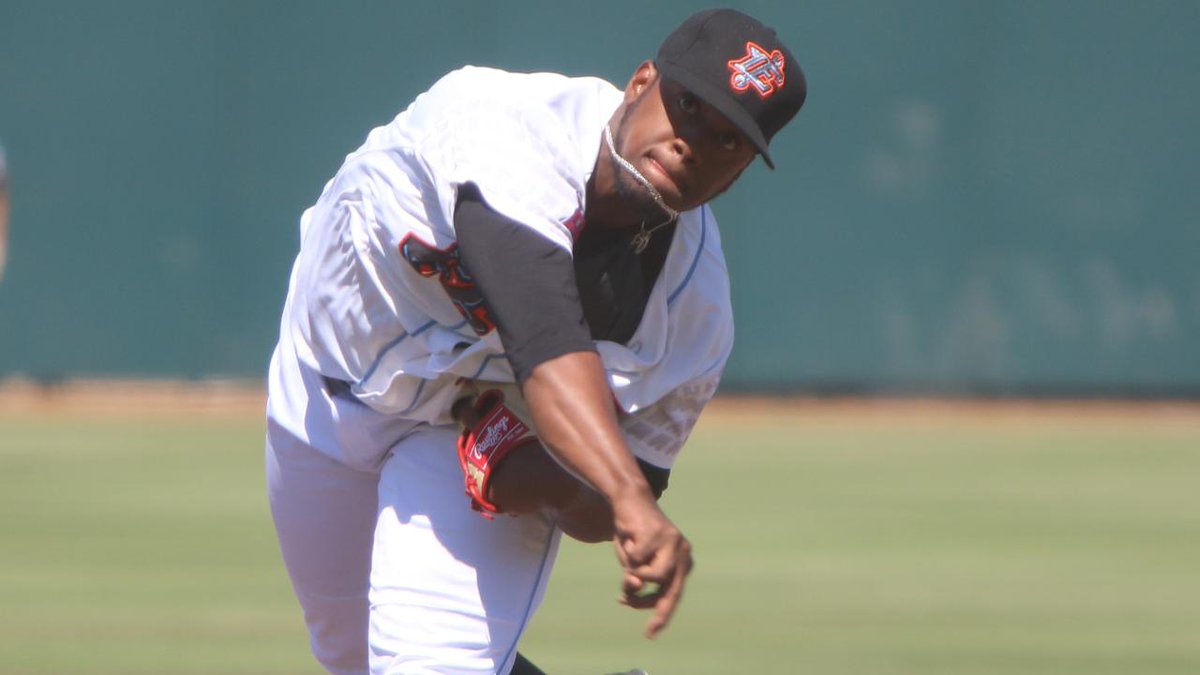Present Future
The Angels to their credit, have no problem developing a pitcher as a starter until it becomes more than obvious that continuing to do so would be a detriment to the player. And believe it or not, logic stands with them. Take J.C. Ramirez and Parker Bridwell for example. Both starters in the low minors and both struggled in that role, both transitioned to relief in the upper minors, both weren’t entirely successful pitching in relief, both were acquired by the Angels for cheap, and both turned into very serviceable starters.
And so we have Luis Pena. In any other system, he’d never had toed the rubber in a starting role. He isn’t built like a starter, he’s built like a Fernando Rodney type of reliever. His delivery is not that of a starters, too much effort, throws across his body. His control is not that of a starter, but that of a reliever that throws in the mid to high 90’s. His breaking ball is too good to be a starter’s too. It’s too sharp, thrown too violently. No way his elbow could take that sort of stress. Then there’s the change up to consider. It’s a really good change up, except he can’t throw it for a strike, or even dictate where it will end up.
And yet he remains a starter.
When Pena was starting in A Ball, it was an understandable function of an A Ball roster. It’s normal to have a reliever or starter piggyback and go three innings at a time. But when we entered the 2017 season with Pena still listed as a starter, and not the piggyback type in the Cal League, that was a head scratcher. What could the Angels be thinking?
Half way through he year, such critical thinking was more than warranted. Pena had an ERA over 5.00 and a BB/9 over 5.0. Yeah, he was striking out a lot of hitters, but he was also putting a ton on base.
Then something magical happened. The calendar turned from June to July, and it began. 9 IP 1 ER 0 BB 12 K’s. 8 IP 2 ER 0 BB 10 K’s Before Pena had been walking 5 batters a game. Now he couldn’t miss. Such a streak wouldn’t last of course. Pena began walking two or three batters a start, but nowhere near where he was before. In fact, in his last five outings in the Cal League, Pena never allowed more than three runs in a game, which is a great result in a hitter friendly environment like the Cal League. What’s more, he never walked more than three batters in a game, which says a lot for him.
Once promoted to AA, across four starts Pena walked 0, 2, 2 and 5. The game where he walked five batters was by far his worst and speaks to Pena’s ability as a whole. If he can throw strikes, he’ll be successful, in any role the Angels have planned for him.
Grades are given from the 20-80 scouting scale. 20-being non-existent ability, 80-being the best I’ve ever seen. MLB average is 50. A 92 mph fastball generally would be a 50. A 97 mph fastball is a 65. A .260 hitter is a 50. A .300 hitter is a 70.
Add The Sports Daily to your Google News Feed!
